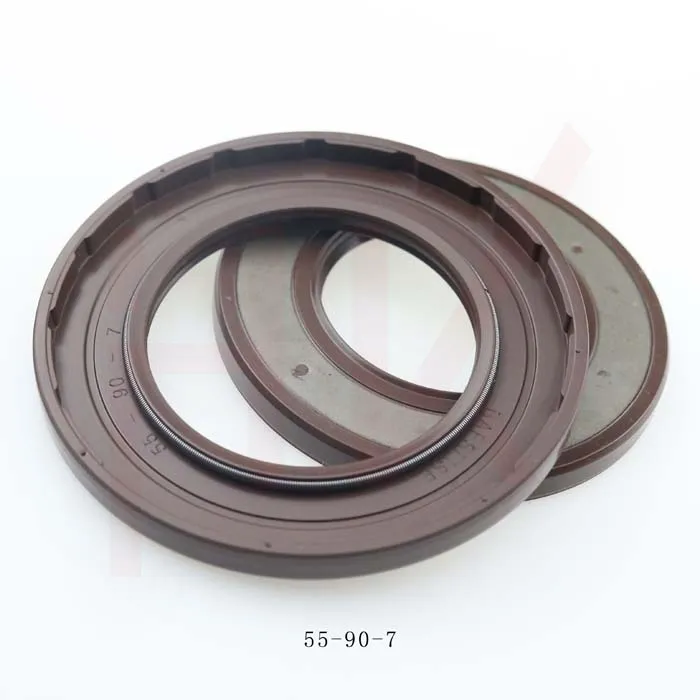Dec . 17, 2024 02:41 Back to list
hydraulic motor seal replacement
Hydraulic Motor Seal Replacement A Comprehensive Guide
Hydraulic systems are crucial components in various industries, powering machinery and equipment to operate efficiently. One critical component of these systems is the hydraulic motor, which converts hydraulic energy into mechanical energy. Over time, seals within the hydraulic motor can wear out, leading to leaks and reduced performance. Therefore, understanding how to replace these seals is essential for maintaining the efficiency and longevity of your hydraulic equipment.
Understanding Hydraulic Motor Seals
Hydraulic motors utilize various seals to prevent fluid leakage and to maintain pressure within the system. These seals are typically made of rubber or other durable materials that can withstand high pressures and temperatures. The most common seal types found in hydraulic motors include O-rings, lip seals, and quad rings. Regular maintenance and timely replacement of these seals are vital to ensure optimal performance and avoid costly damages.
Signs That It's Time for a Seal Replacement
1. Fluid Leakage The most apparent sign that seals are failing is the presence of hydraulic fluid leaking from the motor. This not only leads to operational inefficiencies but can also pose safety hazards. 2. Decreased Performance If you notice a drop in the performance of the hydraulic motor, such as reduced power output or erratic operation, it may be time to inspect the seals.
3. Increased Operating Temperature Worn seals can cause the hydraulic fluid to overheat, leading to further damage within the system.
4. Unusual Noises If you hear grinding or whining noises, it may indicate that the motor is struggling to function correctly, possibly due to seal degradation.
Steps for Seal Replacement
Replacing hydraulic motor seals can seem daunting, but with proper guidance and tools, it can be accomplished efficiently. Here’s a step-by-step guide
1. Preparation Before starting, ensure you have the necessary tools and replacement seals. Common tools required include wrenches, pliers, and a clean workspace.
hydraulic motor seal replacement

2. Drain the Hydraulic Fluid Safely drain the hydraulic fluid from the motor to prevent spills and contamination. Follow local regulations for fluid disposal.
3. Disassemble the Motor Carefully disassemble the hydraulic motor. Take note of the assembly order and the placement of various components. This step is crucial for a successful reassembly.
4. Remove Old Seals Once the motor is disassembled, remove the old seals. Check for signs of wear, damage, or distortion that led to failure.
5. Clean the Seal Grooves Use a clean cloth to remove any debris or residue from the seal grooves. This ensures that new seals fit correctly and seal effectively.
6. Install New Seals Carefully place the new seals in their respective grooves. Ensure they are seated properly to avoid further leaks.
7. Reassemble the Motor Follow the notes taken during disassembly to reassemble the motor in the correct order. Ensure all components are tightened to the manufacturer’s specifications.
8. Refill with Hydraulic Fluid Refill the motor with the appropriate hydraulic fluid, ensuring all connections are secure to prevent leaks.
9. Test the Motor Once everything is reassembled, start the motor and monitor its performance. Check for any signs of leaks or unusual noises.
Conclusion
Replacing hydraulic motor seals is a vital maintenance task that ensures the efficient operation of hydraulic systems. By being vigilant about signs of seal wear and conducting timely replacements, you can prolong the life of your hydraulic equipment and prevent costly downtime. Whether you choose to perform the replacement yourself or hire a professional, understanding the process empowers you to make informed decisions about your hydraulic systems. Regular maintenance is key to achieving optimal performance and reliability in your operations.
-
Wiper Oil Seal: Our Commitment to Clean Hydraulics
NewsAug.13,2025
-
Hydraulic Oil Seal for Self Discharging Cars
NewsAug.13,2025
-
Hub Oil Seal for Agricultural Tractor Hubs
NewsAug.13,2025
-
Skeleton Oil Seal with NBR Material
NewsAug.13,2025
-
Rotary Lip Seal for High Pressure Applications
NewsAug.13,2025
-
Cylinder Seal Kits Our Legacy of Hydraulic Trust
NewsAug.13,2025
-
Unlocking the Potential of Hydraulic Systems with Essential Sealing Solutions
NewsAug.06,2025
Products categories
















